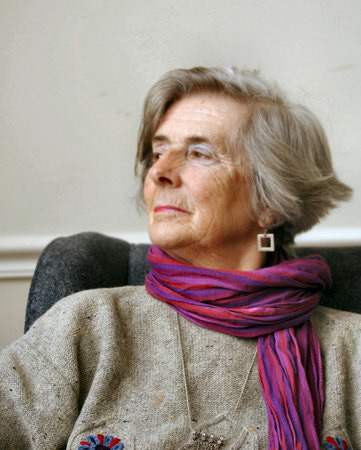
Esther Moir de Waal is a foremost scholar in the Benedictine and Celtic traditions and a beloved spiritual writer who pioneered the application of monastic spirituality to everyday life. A historian trained at Cambridge University and the mother of four adult sons, she has lectured and offered retreats in her native United Kingdom and globally. She is the author of many articles and eight books on spiritual life. The Evelyn Underhill Association is grateful she agreed to a brief interview with Dana Geene, president emerita of the EUA, on her memories of reading Underhill, her recollections of the sense of place she associates with Underhill, and the importance of Evelyn Underhill in her own world–and ours.
My first encounter with Evelyn Underhill was by way of Pleshey, and I remember it vividly. I was a graduate student in history living in London, and I went for my first retreat. It was the start of Lent, February 1957, and it was cold, bitterly cold, with of course no such thing as central heating. I was frozen but felt that the colder I became the holier I must be! I was reading Underhill’s Abba: Meditations on the Lord’s Prayer and loving it. It brought something familiar vividly to life, and I felt as though I had discovered something which added a new dimension to my belief.
My next encounter was again associated with place. By then I was living in Canterbury, and in the cathedral there was a chapel up a flight of stairs, generally kept locked.This was All Saints Chapel, and it has Evelyn Underhill’s crucifix on the wall. Here a small group met regularly for meditation under the guidance of Miss Agatha Norman, who had been a friend of Underhill. She instructed each new member of the group in how to present material and to reflect fully and prayerfully on it, just as she herself had received and reflected on it.This is how I learned to
present material, not in lecture style or for a symposium, but quietly and reflectively–a gift for which I have been supremely grateful.
This, then, was the incentive to pick up more of Underhill’s writings, and what I chose were her letters. They did not seem to be either too Edwardian or too stilted. I knew Campden Hill Square [where Underhill lived in London from 1907 to 1939] because of friends living there, and, again, a sense of place came into play, for I could vividly imagine Underhill there. I also loved the wide range of her correspondents and subject matter.
I found myself drawn into the general subject of mysticism, and I look upon that as Underhill’s final gift to me. Subsequently, my reading centered around the monastic tradition, where I discovered a glorious balance between Evelyn Underhill, mysticism, and monastic wisdom.